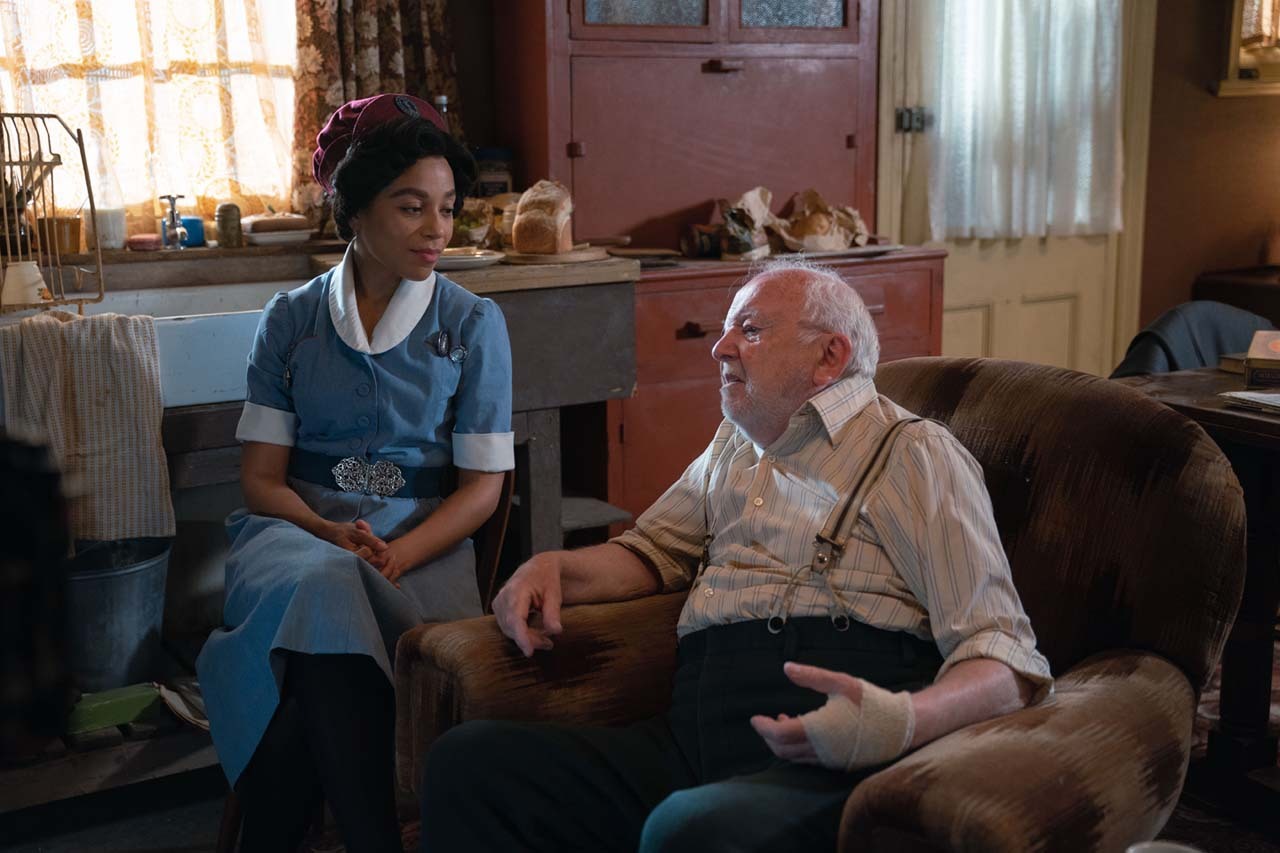Do you know where you belong? Have you ever been in a situation where you did not feel at home, or felt unwelcome? In this episode, Mr. Woodley had strong feelings about being where he felt at home, as did Nurse Lucille. Aggravating Lucille’s homesickness, grief and depression is the racism that made her feel unwelcome. As I explore the history of American nurse-midwifery, I can’t ignore the racism instilled in the profession which made Black midwives feel unwelcome. Although early American midwifery was deeply enmeshed in Black community and culture, today less than 5% of nurse-midwives in the United States are people of color despite Brown and Black people being estimated as 30% of the population.
While British midwives today deliver over 50% of babies in their country, American midwives deliver approximately 11%. The cost of this lack of midwifery and diversity is high. Black mothers are 2-3 times as likely to die in childbirth as White mothers. While American women of all races face some of the highest maternal morbidity and mortality rates in the world, racism is a key factor. How did these disparities happen?
Midwifery in America started long before Europeans arrived on the shores of North America. Indigenous women relied on wise female healers to assist them in the sacred passage into motherhood. Enslaved women depended on other enslaved women in their communities who were experienced in childbirth. These Grand or “granny” midwives continued to train others after the civil war and became the primary source of health care for Black communities and many rural and poor White women who had no other access to health care. In the 1900s, an estimated 90% of babies in the south were attended by Black midwives. In the northern states, women without money were also attended at home by traditional midwives who were often immigrants from Europe or migrants from the rural south. Women with money went to hospitals attended by physicians.
Before the 1800s, there was little interest in childbirth by physicians. But as the science of medicine developed more surgical and procedural technology, interest grew as childbirth provided an opportunity for physicians to use their new techniques. Reflecting the sexism and racism of the times, physicians were almost exclusively White men. A controversial surgeon by the name of Marion Sims (1813-1883) made his name and fortune from medical advances perfected by experimenting and operating on enslaved Black and poor Irish immigrant women, without anesthesia. By 1900, half of births were attended by physicians in hospitals despite their having little training in actual obstetrics. The 1910 Flexner report was a study calling for the abolition of homebirth and midwifery. It is now recognized for its racist, sexist and classist approach.
In 1915, prominent physician, Dr. Joseph DeLee called childbirth a destructive pathology, arguing for the abolition of midwifery. While medical advances did reduce risks of childbirth and improve outcomes, medicalized birth also led to the disempowering of women to the whims of a systemic patriarchal authority. Not just birthing women but also their traditional attendants. Medicine initiated campaigns against the unscientific training and practices of traditional “granny “midwives. Doctors promoted hospitals as the safest and most comfortable place for birth and enticed women with the availability of anesthesia and pain medications. Regulations and laws passed in the early twentieth century prevented traditional midwives from practicing in many areas. In underserved and economically depressed areas of the south, where there was little money to be made by physicians, Black midwives still attended 75% of births until 1940’s.
This was the womb in which American nurse-midwifery was conceived by Mary Breckenridge in 1925. She founded the Frontier Nursing Service (FNS) in Kentucky, the first nurse-midwifery education program in America. I am grateful to have had the opportunity to receive my midwifery training through the school in the 1990s. Breckenridge was a woman of her time and place, raised post-civil war in a southern aristocratic family with racist and sexist ideologies. She bravely shook off the sexist limitations her family implored her to adopt but clung to racist eugenic ideas.
As is so often the case with well-intentioned people, she did great harm along with the good by instilling a deep and lasting racism into American nurse midwifery. Recognizing and acknowledging that racism is a critical step in stopping the hurt. In this week’s episode of Call the Midwife, we see the wisdom of acknowledgment in the apology and change in action Sister Julianne offers when she learns of the hurt, she inadvertently caused Lilian Reynolds as Lilian deals with her breast cancer diagnosis. She did not waste time gnashing her teeth with guilt, she took responsibility for her part and sought to correct the harm. Frontier Nursing University, formerly FNS, is trying to repair the hurt and make Black midwives feel more at home in the profession.
